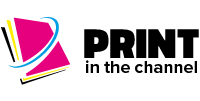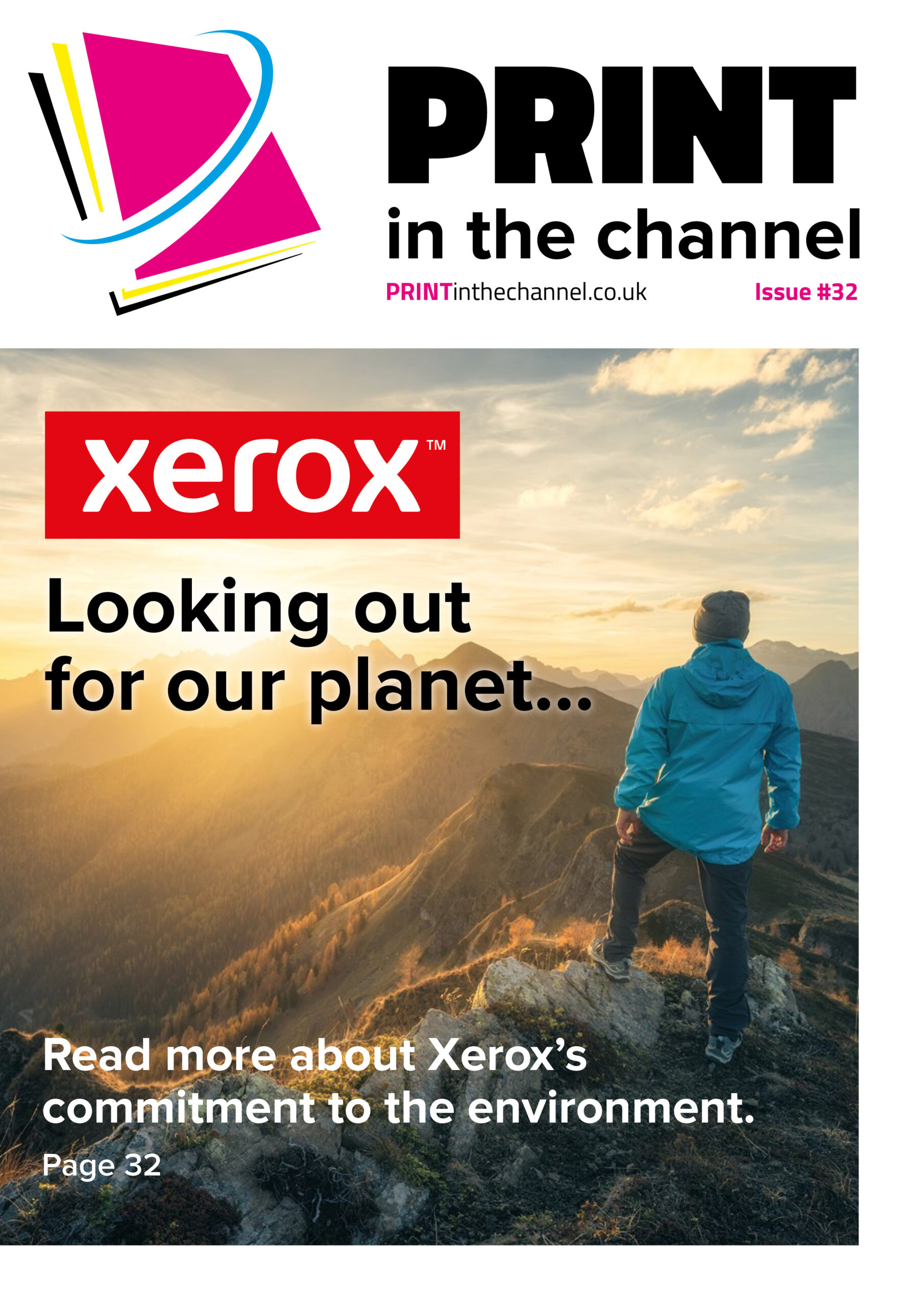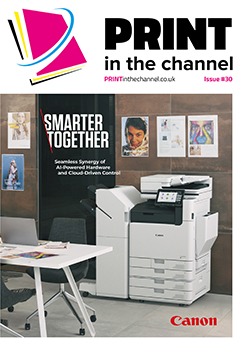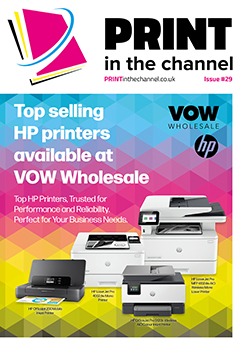Labels have become a vital part of the logistics industry as customers increasingly want to see where their products are at any point in the delivery chain. With this trend only going one way, it is a good market for resellers to get involved in.
The global logistics industry was worth more than $14 trillion in 2022, and analysts agree that it is only going to grow in the coming years, especially as ecommerce continues to grow, buoyed by the global pandemic.
But with such a large industry, it is imperative that everything gets to its end destination and, increasingly, labels are playing a vital role in this – especially with the digitisation of many businesses. This means resellers play an important role in supplying the labelling technology logistics businesses need.
“As logistics has become more complex and digitised, labels have gained in importance,” says Moritz Weisbrodt, CEO of Alaiko. “Firstly, for the supply chain, as pallets and shipments need to be well labelled to track them along the way. Storage in the warehouse is another area where labels are essential, for example for the management and correct storing of incoming goods. Labelling facilitates LOT management and batch tracking and helps to ensure that first-in-first-out principles are adhered to. Modern storage and picking solutions using robotics in the warehouse rely on barcoded labels to scan items to store them in the right place or deliver them to the right packing station.”
Labels then play a critical role in order fulfilment, Moritz adds. “This ensures that the right order is shipped to the right customer and that the package’s journey can be tracked along the way,” he says. “This tracking information can then be used to inform customers about their orders proactively via email or on demand via tracking pages. Reverse logistics, or returns, has become a huge part of the e-commerce world and only works well if there are good labelling practices in place.”
Moritz adds that the market is evolving, and supply chains are becoming increasingly complex. “This makes it vital for companies and logistics providers to keep track of the movement of goods,” he says. “Customers are becoming more demanding when it comes to online ordering – brands and logistics companies need to keep up. Technology is the answer.
“Customers want their orders delivered quickly and they want to know where their package is at all times. Without automation and tech-first fulfilment, mistakes can happen. Misplaced orders, wrong deliveries and delays can lead to frustrated customers and damage your reputation. With the use of technology, errors can be minimised and orders can be tracked and managed effectively. Labelling is an important element in all logistics processes, from inventory management to order processing and shipping. For example, labels enable the real-time tracking and updates that customers have come to love.”
E-commerce shift
Mikhaila Corbett-Hassit, marketing executive at Toshiba Tec, adds that the world is more interconnected than ever. “Over the last few years, we have seen the huge impact that disruption and external pressures can have on the logistics industry,” she says. “Accurate labelling helps prevent bottlenecks from grinding global supply chains to a halt, maintaining a smooth flow of goods as much as possible. Their role in facilitating accurate tracking, operational efficiency, and regulatory compliance is vital, ultimately maximising visibility and minimising the risk of errors or delays.
“The shift to e-commerce has significantly impacted the market, with consumers demanding seamless shopping experiences and fast, flexible, reliable delivery of goods. As a result, logistics providers are under pressure to achieve end-to-end supply chain visibility, and any solutions that can support this will be sought after.
“The impact of CVOID-19, Brexit and the war in Ukraine has called for diversification and better management of risk to stay resilient and maintain customer satisfaction. Despite cost and speed remaining key priorities for consumers, sustainability is also a growing concern, and its influence on buying behaviour is now trickling down to the supply chain. In response, solutions that can support a reduction in carbon emissions and waste will prove to be important investments, as ‘green logistics’ initiatives gain traction.”
Solutions for greater control
With these concerns in mind, Mikhaila adds that the most prominent products on the market are those that minimise manual processes and errors, offer greater control and management of printing and enable better tracking of goods. “Solutions that can facilitate those goals will ultimately be attractive to key stakeholders,” she says.
“There is a growing emphasis on cloud-based labelling software for better control over printing processes and hardware like automatic label print and apply systems to increase uptime. Validation solutions are ever popular, ensuring accuracy throughout the barcode labelling process, and if sustainability is a priority, linerless labelling solutions are an ideal option for reducing the waste produced throughout the labelling operation. RFID solutions are also gaining popularity, especially devices that enable seamless RFID tagging for improved visibility and tracking.”
Various solutions
Jay Kim, managing director of BIXOLON, notes that there are many different types of printers and media options on the market today, each with their own benefits. He agrees that RFID and linerless solutions are important.
He says that RFID labels, which come with the ability to store information on a label that can be read with a specialised reader along with visual printed information, are popular. “With a range of RFID printing technology on the market today, UHF print and encoding technology seems to be the most popular, which works in conjunction with specialised readers and beacons,” he says.
Linerless labelling is also important, he adds. “This offers variable length labelling without the need for backing paper and uses either permanent or semi-permanent labelling technology, which must be used with specialised linerless label printers.”
But the most readily available labelling type on the market today are traditional pre-cut labels, Jay says. “Pre-cut labels come in a range of sizes and can be used in desktop, industrial and mobile printing solutions,” he adds. “These types of solutions use a range of printing technologies such as direct thermal and thermal transfer printing depending on the label type allowing for either a clean crisp or glossy surface.”
Label solutions
Andréas Olsson, global sector manager – logistics & distribution, Domino Printing Sciences, adds that white paper labels, printed using print and apply labelling solutions, are the most dominant data carrier for logistics labelling. However, concerns about the environmental impact of paper labels may prompt an increase in alternative logistics labelling solutions in the coming years.
“Print and apply labelling solutions using linerless labels are discussed, however, available solutions have failed to make significant traction,” he says. “Practical alternatives can be seen in direct-to-box printing.”
Andreas adds that thermal inkjet printing solutions can be used to print directly on smaller-sized cartons and boxes in the logistics industry. “Such solutions can print at a very high resolution, making them suitable for text and graphics, as well as serialised data, unique device identifiers and machine-readable codes. Large character piezo inkjet printers are an alternative, high-resolution solution for larger-sized printing requirements or printing directly on carton and paper webs forming cartons and bags.
“With any direct-to-box printing solution, businesses need to ensure smooth materials handling on conveyor belts to achieve maximum code quality. In addition, proper inspection solutions are also recommended whenever printing 1D or 2D codes for traceability, to ensure readability and avoid unnecessary waste from printing errors.
“Various direct thermal printing and laser marking solutions continue to be successful in different niche applications. They will play an increasing role but, as yet, there is no indication of them becoming mainstream.
“We predict that print and apply labellers, as long-trusted, reliable solutions, will continue to dominate the logistics and distribution market in the coming years. However, we foresee growth in this area beginning to slow as the sector wakes up to the benefits of direct substrate printing.”
Getting into the market
With the myriad technology available and a growing sector, logistics labelling is a market that resellers should consider getting involved in. “While the market is competitive, it’s an opportune moment for resellers,” says Mikhaila. “They should consider partnering with reputable manufacturers and suppliers that provide reliable products and dedicated support, in the form of partner programmes.
“Resellers should leverage their access to expertise and a range of high-quality solutions to diversify their product portfolios into other areas and identify opportunities for account penetration. Offering a variety of funding options, such as leasing, is attractive to customers who don’t have as much upfront capital expenditure, which will give resellers a competitive edge.
Mikhaila adds that the market will continue to see a demand for future-proof solutions, particularly in the form of automation. “As the logistics industry continues its digital transformation, secure cloud-based solutions and automation technology will be increasingly essential tools for achieving efficiency, compliance and driving profitability,” she says.
Jay adds that for resellers that want to get involved in the market, there are two keys to success: research and creating bundles of high-quality products to fit the target market’s requirements. “Manufacturers now work closely with market-leading labelling software solutions making it easier to bundle together PDAs with printers and label media with the recommendation of complimentary software,” he adds. “Printing technology, scanners and consumables are readily available in the channel so can easily be ordered and either shipped to the reseller or directly onto the end user.”
Growth and innovation
There will be more opportunities for resellers in the coming years, Jay adds. Businesses are now becoming more environmentally conscious,” he says.” Technologies such as linerless labelling is becoming more popular as a simple, eco labelling alternative that allows variable length labelling which comes without the need for backing paper.
“This specialised media comes in different adhesive strengths, either permanent or semi-permanent which work only with specialised printing technology.
“Mobility labelling will also see growth. With a range of different solutions available on the market today from mobiles to stationary mounted printers for vehicles. The use of mobility printing within logistics will continue to grow.”









